https://www.csee.umbc.edu/~hpirsiav/papers/cascade_cvpr17.pdf
Weakly Supervised Cascaded Convolutional Networks, Ali Diba, Vivek Sharma, Ali Pazandeh, Hamed Pirsiavash and Luc Van Gool
亮点
- 通过多任务叠加(分类,分割)提高了多物体弱监督检测的正确率
- 通过利用segmentation筛选纯净的proposals,得到了更鲁棒的结果
- 为弱监督分割任务设计比较鲁棒的loss
- 只考虑全局的分类结果和置信度对高的部分
- 通过loss的weights关注到最需要关注的部分
相关工作
One of the most common approaches [7] consists of the following steps:
- generates object proposals,
- extracts features from the proposals,
- applies multiple instance learning (MIL) to the features and finds the box labels from the weak bag (image) labels.
弱监督物体检测难点: 弱监督物体检测对初始化要求很高,不好的初始化可能会使网络陷入局部最优解,解决的办法主要有以下几个:
- improve the initialization [31, 9, 28, 29]
- regularizing the optimization strategies [4, 5, 7]
- [17] employ an iterative self-learning strategy to employ harder samples to a small set of initial samples
- [15] use a convex relaxation of soft-max loss
Majority of the previous works [25, 32] use a large collection of noisy object proposals to train their object detector. In contrast, our method only focuses on a very few clean collection of object proposals that are far more reliable, robust, computationally efficient, and gives better performance
方法
Two-stage: proposal and image classification (conv1 till con5, global pooling) + multiple instance learning (2fc, score layer)
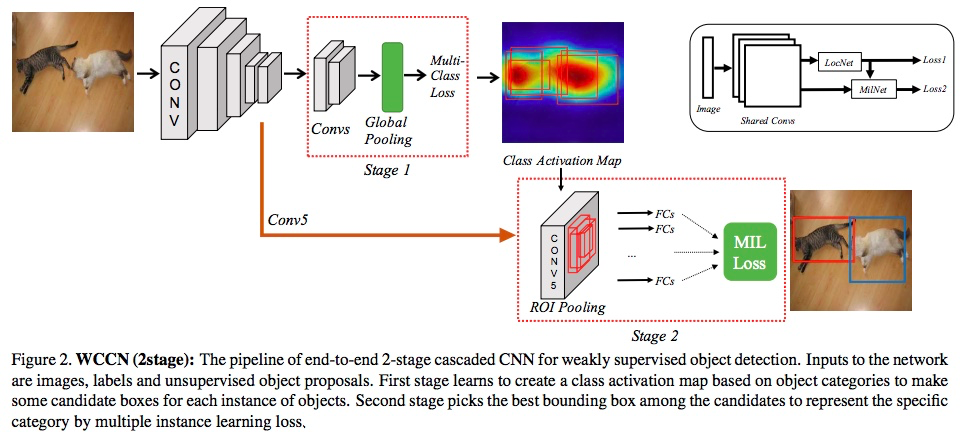
1. image classification: CNN with global average pooling (GAP) [36]中引入,将分类过程中fc层的weights作为原来convolutional layer输出的权重并将所有频道加权得到的图作为class activation map。在这一步中,还产生一个分类的loss LGAP
[36] B. Zhou, A. Khosla, A. Lapedriza, A. Oliva, and A. Torralba. Learning deep features for discriminative localization. In CVPR, 2016. 3, 4, 5, 6, 7, 8
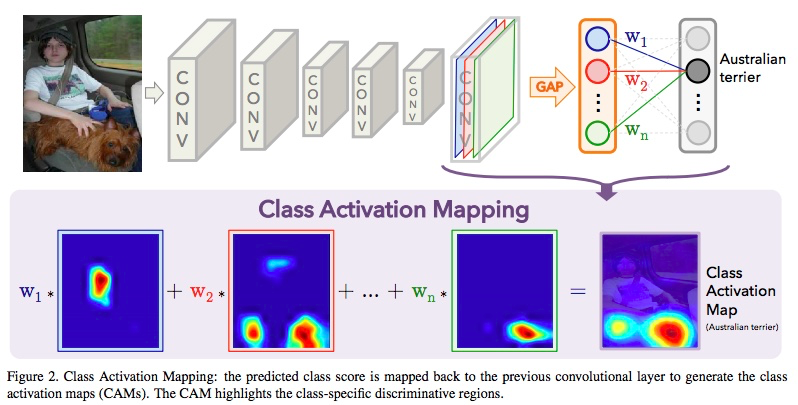
2. multiple instance learning
Proposal: edgeboxs [37] is used to generate an initial set of object proposals. Then we threshold the class activation map [36] to come up with a mask. Finally, we choose the initial boxes with largest overlap with the mask.
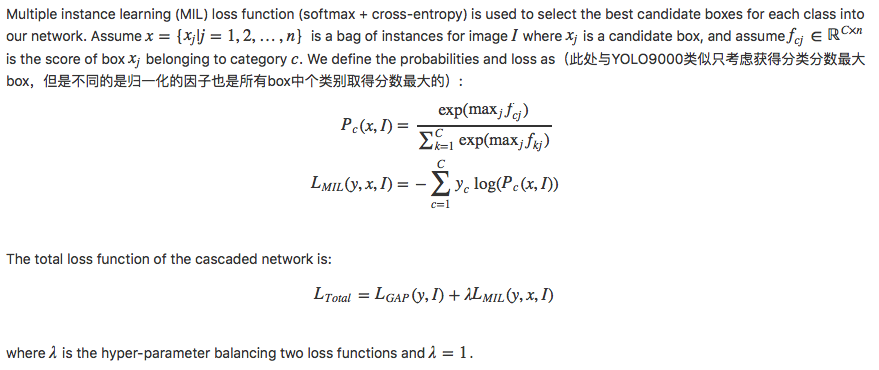
Three-stage: more information about the objects’ boundary learned in a segmentation task can lead to acquisition of a better appearance model and then better object localization.
- 主要思想:分割监督信号帮助提升定位准确率。
- 弱分割监督信号:上一级得到的mask
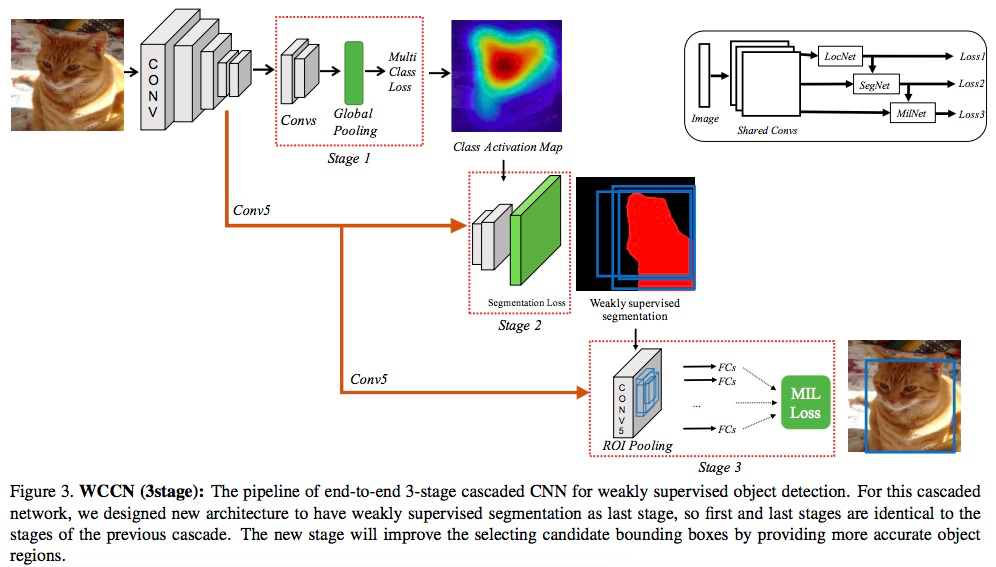
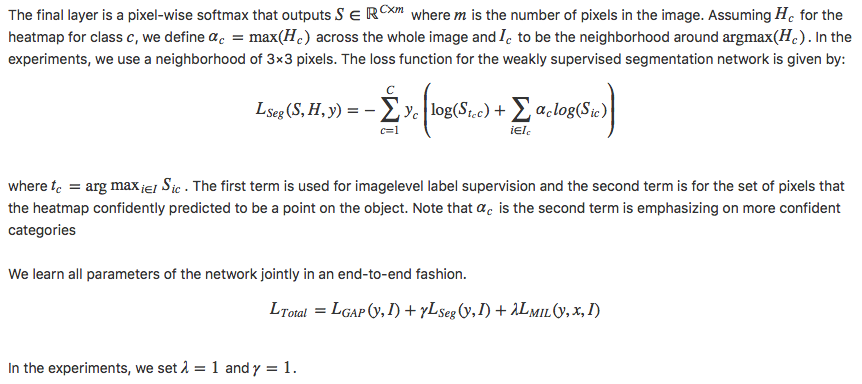
实验结果
PASCAL VOC 2007
- +3.3% classification compared with [18]
- +1.6% correct localization compared with [27]
- +0.6% compared with [6]
PASCAL VOC 2010
- +3.3% compared with [6]
PASCAL VOC 2012
- +8.8% compared with [18]
- ILSVRC 2013
- +5.5% compared with [18]
Object detection training
- PASCAL VOC 2007 test set: Faster RCNN trained by the pseudo ground-truth (GT) bounding boxes generated by our cascaded networks performs slightly better than our transfered model. (+0.3%)
[6] H. Bilen and A. Vedaldi. Weakly supervised deep detection networks. In CVPR, 2016. 6, 7, 8
[18] D. Li, J.-B. Huang, Y. Li, S. Wang, and M.-H. Yang. Weakly supervised object localization with progressive domain adaptation. In IEEE Conference on Computer Vision and Pattern Recognition, 2016. 2, 6, 7
[27] K. Simonyan and A. Zisserman. Very deep convolutional networks for large-scale image recognition. In ICLR, 2015. 5, 6
来源:oschina
链接:https://my.oschina.net/u/4393854/blog/4031961